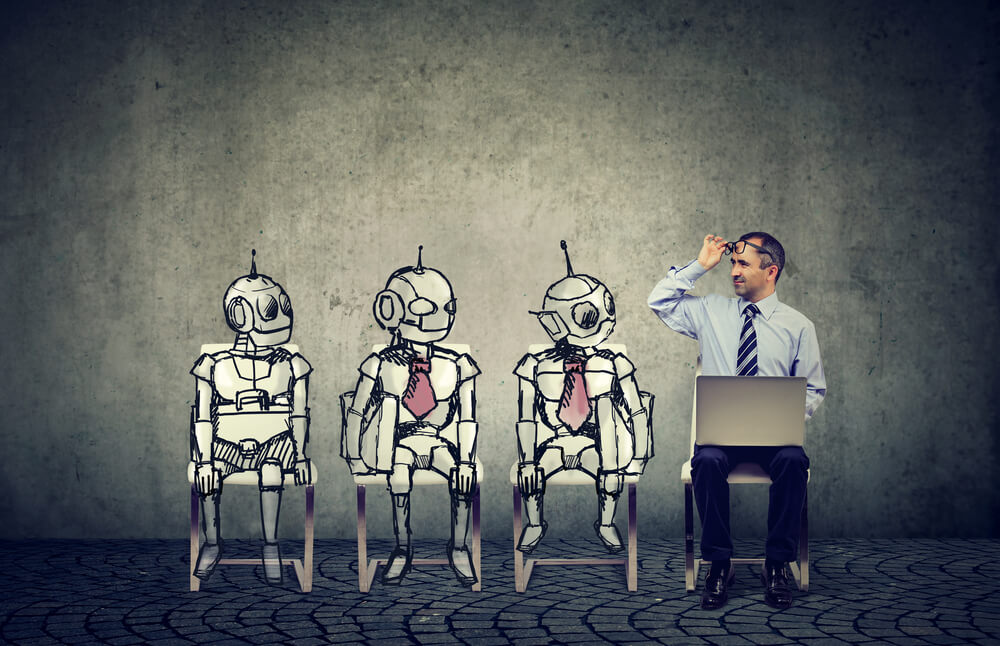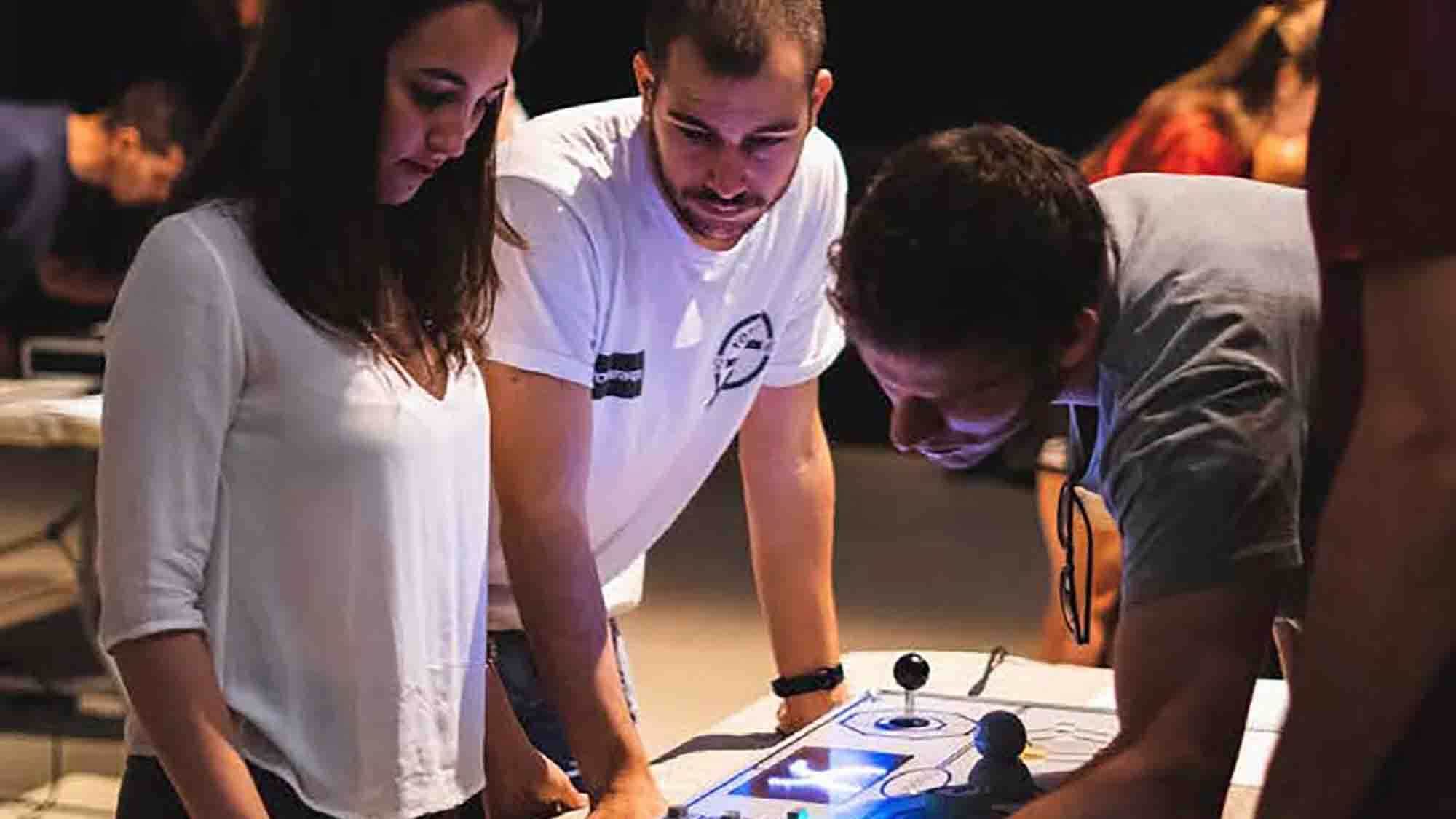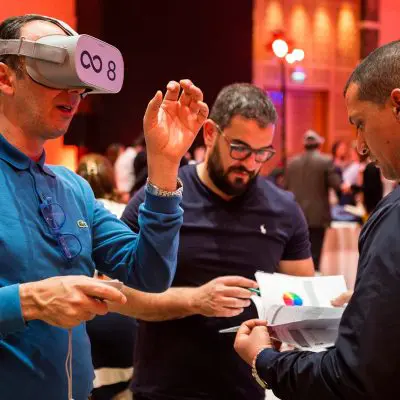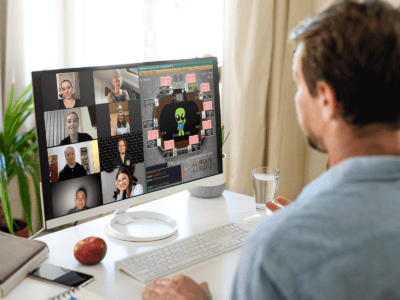As someone who’s been bringing people together since 1988, I’ve seen technology reshape how we work and connect multiple times. But nothing has captured my attention quite like the rapid integration of AI in HR departments in recent years.
Few things in recent years have been as inescapable as AI. No matter what industry you’re in, the reality is that AI in human resources is already here, and it’s becoming increasingly clear that HR leaders need to embrace or at least understand these tools.
In this blog, I’ll share my take on AI and the role it plays in the workplace. We’ll also explore the benefits of AI in the workplace, how to use AI at work, its role in company culture, how leaders are using AI for human resources, common challenges, and more.
Evolution of AI in the Workplace
While artificial intelligence in the workplace continues evolving, it’s becoming increasingly clear to me that HR leaders who really get these tools will be best positioned in the years to come.
However, with any technology comes change, and change can be difficult. As HR professionals know, change management is one of our core responsibilities. The introduction of AI calls for changes in:
- Policies
- Procedures
- Training programs
- Company culture
While this may initially seem daunting, I’ve found that AI can actually be a powerful ally in team building and creating stronger corporate cultures.
The History of Artificial Intelligence in the Workplace
Let’s start by taking a quick look at the history of AI as it pertains to the workplace. Though you might think the use of AI is a relatively new thing, people have technically been using AI at work to different degrees for decades.
1950s-60s
AI really started to be explored in the 50s and 60s by some of the early computer scientists, such as Alan Turing. However, the technology at the time was very limited and only used in the academic world. Still, it laid the groundwork for what was to come.
1980s
The 80s were when we actually started to see the use of AI. Some industries, such as oil and finance, began using AI for decision-making. An AI would examine the market factors at play and make risk assessments based on that information.
2000s
In the 2000s, AI really started to show itself as a powerful business tool. With the internet taking hold, more companies started exploring AI’s potential. With vast amounts of data online, AI could be trained on expansive data sets and become more useful.
Amazon, for example, started using AI algorithms for personal recommendations (a standard these days). Still, the internet was developing, and so was AI. While many started using AI, its functionality was limited compared to what we have today.
Around this era, we also saw the implementation of basic algorithms in applicant tracking systems (ATS) to screen resumes, which is an early example of AI in HR.
2010s
The transformation really began in the 2010s when more sophisticated AI tools emerged. We started seeing AI-powered:
- Recruitment and retention tools using predictive analytics
- Chatbots to process customer service and initial HR inquiries
- Personalized marketing algorithms
- Online searches
- Fraud detection
- Financial advising
- Patient management (in healthcare)
- Academic research
Present Day
Today, business, AI, and HR have become inseparable in many organizations. It’s regularly used for:
- Automated onboarding processes
- Workforce planning and succession analysis
- Performance review insights
- Bias detection
- Personalized learning and professional development recommendations
- Employee sentiment analysis
- Advanced resume screening and candidate matching
The AI available to us now makes even systems from 10 years ago feel ancient. With tools like ChatGPT, specialized HR software with built-in AI, and predictive analytics platforms, the possibilities are seemingly endless.
Future
Looking to the future, today’s AI will likely pale in comparison to what we have in another decade. With things like ChatGPT, Claude, or Gemini, even a single update can drastically change what they’re capable of.
Key Benefits of Using AI for Work
Implementing AI throughout the workplace and within various HR functions offers several game-changing benefits. It’s vital that you understand those benefits if you want to successfully implement AI into your workplace.
Enhanced Recruitment and Talent Acquisition
One of the most immediate impacts of AI in HR is in recruitment. AI tools can process hundreds of resumes in minutes, identifying qualified candidates based on complex criteria that go far beyond simple keywords used in early ATS algorithms. It can:
- Analyze candidate responses based on how they fit the company culture
- Identify potential bias in job listings and descriptions
- Schedule interviews automatically based on multiple calendars
- Predict which candidates are most likely to accept offers
Improved Efficiency and Productivity
AI has revolutionized how we approach efficiency and productivity. It can help employees speed up their processes and complete daily tasks.
For example, say you work in marketing and need to come up with taglines for an ad. Instead of brainstorming all day, you might ask an AI for potential ideas to use as a starting point, speeding up the initial process and helping reach your goal faster.
Better Employee Experience and Engagement
There’s so much potential for using AI in human resource management. It has revolutionized how we support employees with personalized training recommendations based on individual career goals and skill gaps. Even ChatGPT can help with this.
You can implement AI-powered chatbots to provide 24/7 support for common HR questions to improve their experience, or even use AI analysis to find the best ways to enhance specific employee engagement issues.
Powerful Data-Driven Decision Making
It should come as no surprise, given the history of AI in the workplace, but it’s also fantastic for enhanced decision-making.
It can process large amounts of data that would take weeks to process on your own. In doing so, it can provide you with a risk assessment and potential decisions based on the data, so you can make more well-informed decisions quickly.
For example, many AIs have Optical Character Recognition (OCR) capabilities. This means they can process data from things like paper forms and documents. So, AI can be used to automatically gather and enter data from documents, saving tons of time.
These data-driven insights are part of why we see so many businesses using AI in HR. When you combine AI and human resources, managers can better:
- Predict which employees may be at risk of leaving
- Identify high-potential employees
- Analyze diversity, equity, and inclusion efforts
Streamlined Administrative Tasks
AI has also been transformative in how it helps us reduce or eliminate repetitive work. It can handle routine processes like entering or transferring data and other tedious tasks.
This automation frees up significant time for employees to focus on the things that matter, and it almost always comes up as a huge benefit when people are discussing the pros and cons of AI in the workplace.
When you use AI to automate repetitive tasks and streamline your employees’ workflows, you’re making their day-to-day lives more manageable. It’s essentially like everyone getting to have a personal assistant who can help with basic tasks they’d rather not do.
Connection Between AI and Company Culture
One concern I hear during these discussions is whether AI might negatively impact corporate culture. I genuinely believe that the opposite is true when it’s implemented thoughtfully, however.
From my perspective, you can use AI in the workplace to strengthen your company culture in several ways. It can:
- Show that your company values innovation
- Demonstrate a commitment to providing employees with the best support and tools possible
- Reduce unconscious bias during resume screening
- Standardize onboarding processes to ensure every new hire receives the same high-quality introduction
- Streamline communication and identify communication gaps
This is just the beginning. AI can also be used for training and team building, both of which make your employees feel respected and valued, further improving your company culture.
Implementation Strategies for AI in HR & Daily Operations
If you’re wondering how to implement AI in HR and the workplace in general, it’s not as challenging as you might assume. Let’s look at the basics.
Start with Ethical Guidelines
Before introducing any tools for AI and HR integration, establish clear ethical guidelines regarding topics such as:
- Data privacy
- Algorithmic transparency
- Human oversight
There are many ethical concerns when it comes to AI, from it taking jobs from employees to potential plagiarism issues. As a leader working to implement AI, you need to be cautious and ensure that AI is being implemented ethically.
The philosophy that I follow is this: technology should enhance human judgement, never replace it.
Implement High-Impact, Low-Risk Applications
Don’t try to revolutionize everything at once. Start with AI in areas where it can provide immediate value without a significant risk. For example, if you’re implementing AI in HR, you might use a chatbot to field basic questions or an AI scheduling tool for interviews.
Integrate with Existing Systems Carefully
You already have a whole business with workflows, systems, procedures, employees, schedules, and more. Any AI implementation should enhance these processes rather than disrupting them.
So, don’t haphazardly implement AI; figure out the details and specifics first.
Address Specific Business Needs
Every AI tool you implement should solve a real problem or address a specific need. Introducing an AI just so you feel like you’re keeping up with tech instead of presenting it for a particular need often goes poorly.
Examples of Beneficial and Practical Uses
Here are a few examples of beneficial and practical uses. Say you have a data analysis team that is focused on interpreting data to empower your decision-making. However, they currently spend a lot of their time sorting through data before they can analyze it.
Implementing AI could cut down on the time spent sorting and give them more time to focus on analysis and interpretation.
Another potential use is writing. Marketing departments, for example, have a lot on their plates these days, especially with social media. However, writing is still a key part of marketing in many ways, and it can be time-consuming.
A marketing team might use AI to write rough drafts of product descriptions or social media posts, allowing the team to focus more on other duties.
Team Building with Artificial Intelligence
One of the most effective ways I’ve seen organizations address employee concerns about AI is by incorporating it into team building initiatives.
This approach helps employees see AI as a collaborative tool rather than a threat—and it’s become one of my favorite innovations in our industry.
As AI grows more common, you’ll need to make sure your team feels comfortable using everyday AI tools. Here are our favorite team building activities that do just that using AI.
Shark Teams AI
Based on the hit TV show, Shark Teams AI tests your creativity, tech-savviness, and presentation skills. After a quick icebreaker, teams put their heads together to create a new product. The twist? Our expert facilitators help teams brainstorm and prepare using AI tools. After they develop their concepts using AI, each team presents their idea to the sharks.
Charity Guitar Build
Who says music and tech don’t go together? In the Charity Guitar Build, teams build electric guitars to be donated to charity. After the build, teams will use AI-generated music composition tools to create their very own team song. It’s the perfect mix of charitable giving and tech-savvy fun.
Teams vs. Machine AI Challenge
In the Team vs. Machine AI Challenge, teams work together to outwit a rogue bot that has “stolen” vital corporate secrets. This event is brilliant for demonstrating how human collaboration and creativity remain irreplaceable, even in an AI-driven world.
This program involves teams navigating through puzzles and obstacles, and success depends entirely on human communication, coordination, and creative problem-solving. It’s exactly the kind of experience that embodies my philosophy about the power of play.
Breaking News AI
The Breaking News AI program is another one that’s been particularly effective for helping employees understand AI as a collaborative tool.
Teams will use AI collaboration tools for research, content generation, and production support while creating fictional news broadcasts—and the results are both hilarious and enlightening.
What I love about this is how it showcases human-AI collaboration. Participants see how AI can enhance their creativity and productivity while recognizing that strategic thinking, storytelling, and creative direction remain distinctly human contributions.
Addressing Challenges, Considerations, and Resistance
Let’s be honest—the anxiety about AI in the workplace is real and valid. After 35+ years of helping organizations navigate change, I’ve learned that addressing these concerns head-on with empathy and transparency is the best way forward.
Focusing on implementation options that improve the lives of employees, like using AI in HR, is a great place to start. But let’s take a look at the concerns that are at the forefront of most people’s minds when this topic comes up in the conference room.
Job Security Fears
The most common fear I encounter is job replacement, and sometimes this is very valid. After all, plenty of companies have used AI to reduce their staff of writers, editors, and support staff they’re paying.
If you want employees to be on board, you need to make it clear that AI is a supplemental tool and not a replacement for real humans. Explain how it’ll make their lives easier and implement policies to protect their jobs to help ease their concerns.
Maintaining Human Connection
Some also fear that, when bringing AI into HR, the importance and value of human connections will be overlooked. AI is a powerful tool, but so are the relationships we develop as co-workers and team members.
Both have a place in the workplace, and it’s essential not to overlook one or the other.
One way to mitigate these concerns is through team building, which can help:
- Bring employees together
- Instill confidence
- Unite team members around a purpose
- Create a sense of community
Regular team building events help show employees that you still value them, their skills, and see them as essential to the workplace for years to come. They can ease the fears of using AI in HR and basic processes, helping ease your team’s fears.
For example, events like Team Synergy and Infinite Loop can help bring your team together and improve their skills, which can help mitigate some concerns about AI.
These events also use AI-driven bots and VR, showing how these new tools can be used alongside teamwork to build connections and make your teams even stronger.
Building an AI-Ready Culture with TeamBonding
As AI continues transforming how we work, maintaining strong team connections will be more important than ever before. It’s not perfect, but using AI in HR and throughout the workplace can help you improve your culture so it’s a better place to work for everyone.
The key is to balance it with human experiences and engagement. Don’t lose sight of the human relationships and connections that make your business unique and special. At TeamBonding, we understand this balance.
Our AI-enhanced team building programs help organizations embrace technological advancement while strengthening the human bonds that drive success. We also have numerous events that can help you keep that human connection alive.
Ready to help your team thrive in an AI-enhanced workplace? Get in touch with us today and discover how the right team building approach can transform technology adoption challenges into opportunities for stronger collaboration and culture.



















